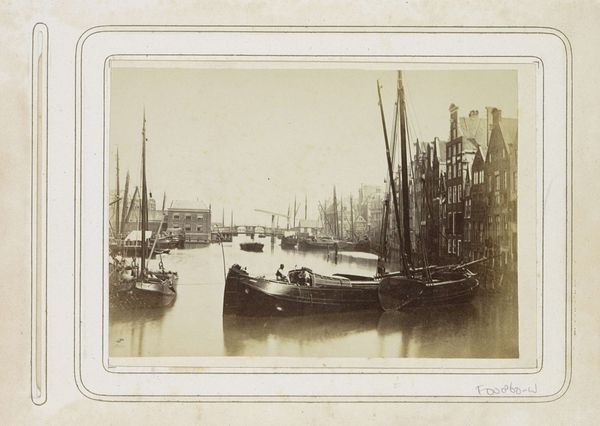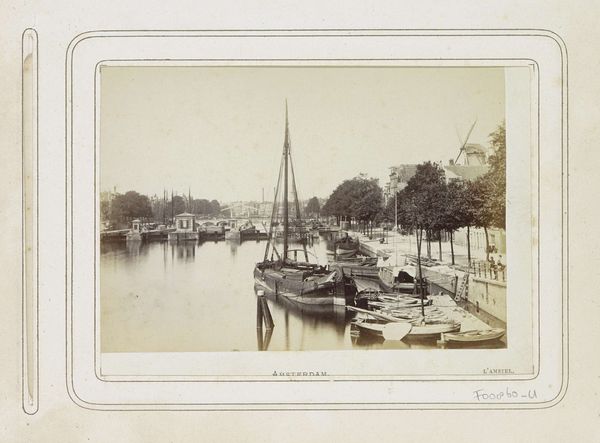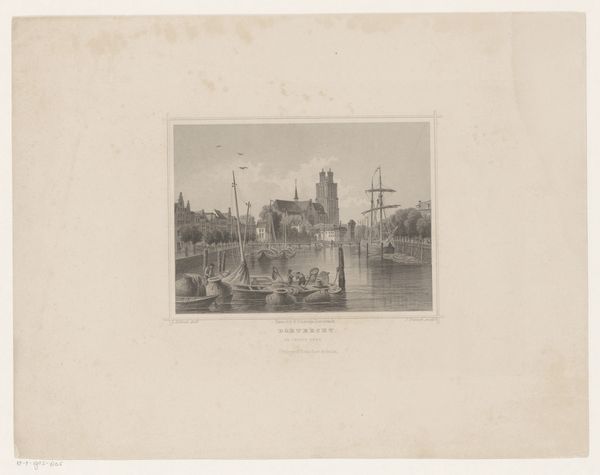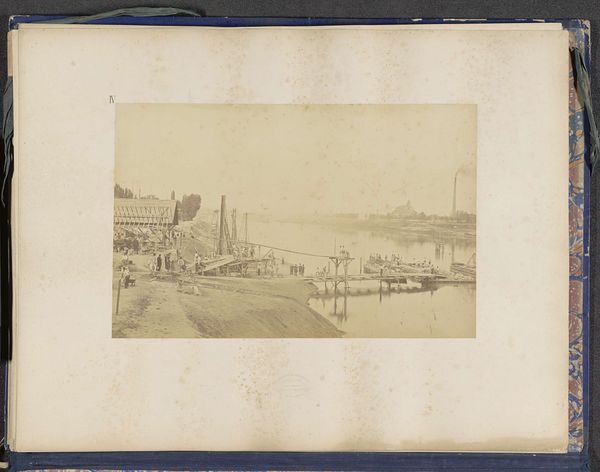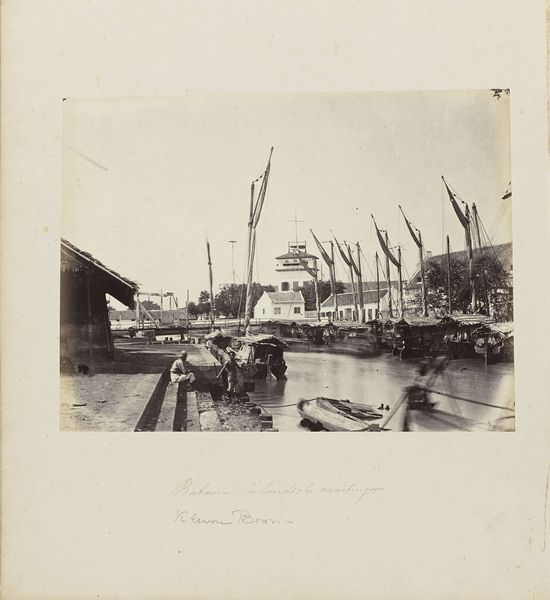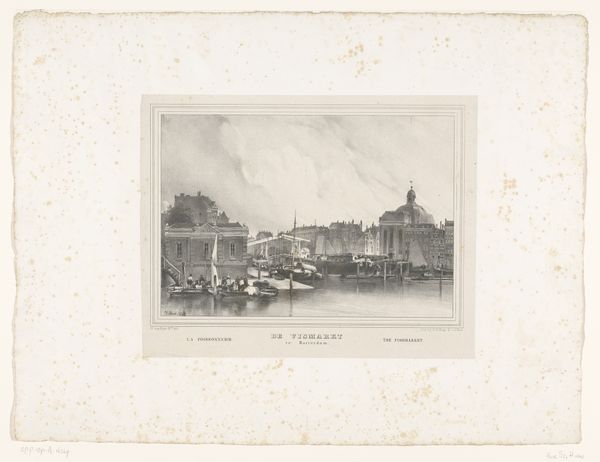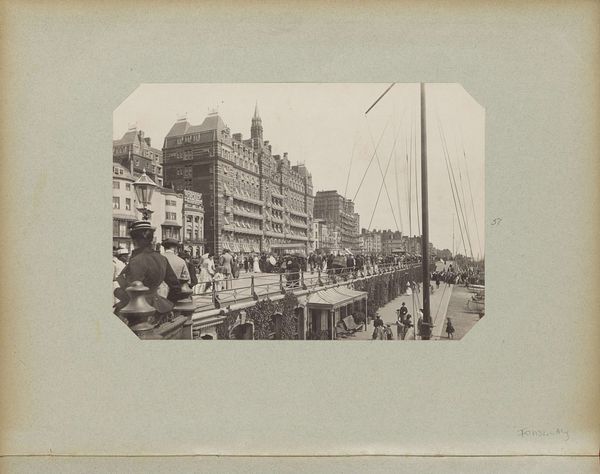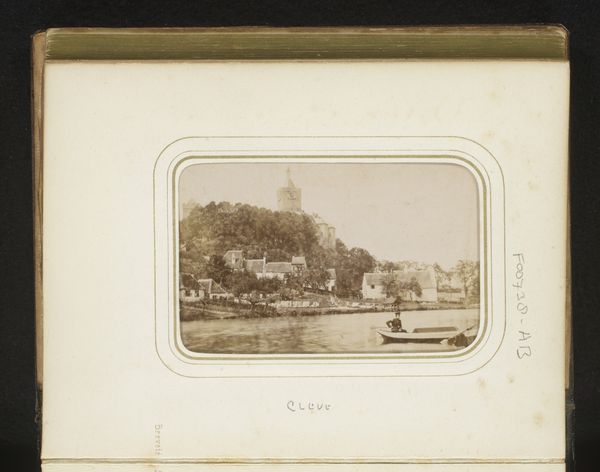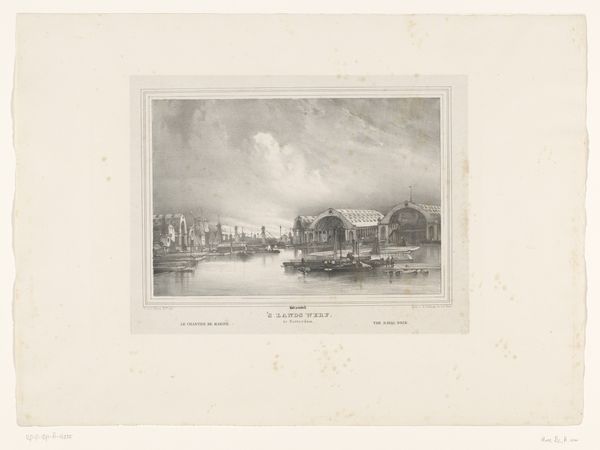
print, photography, albumen-print
# print
#
landscape
#
photography
#
cityscape
#
albumen-print
#
realism
Dimensions: height 107 mm, width 165 mm
Copyright: Rijks Museum: Open Domain
Curator: This albumen print, entitled "Gezicht op het Waaggebouw aan de Nieuwmarkt in Amsterdam," was captured sometime between 1860 and 1875 by Andries Jager. Editor: It’s remarkably crisp. There’s a stillness, almost a staged quality, despite being a public space. The contrast between the dark boats and the light stone of the Waaggebouw really grabs you. Curator: I find it powerful how Jager documents Amsterdam during a period of significant urban and social transition. The Nieuwmarkt wasn't merely a place of commerce. Its history is steeped in civic identity. Editor: Absolutely. The perspective is very deliberate—positioning the viewer at the water's edge emphasizes the import of trade and labor within the city’s structure. Look at the detailed reflections of the buildings in the water, and then the figures in dark coats carefully negotiating a commercial exchange. It is a record of their work! Curator: And who are these people within the frame, how does power affect them? The Waaggebouw originally functioned as a gate in the city walls, later transformed into a weighing house. The transition in use also represents the evolving power structures within Amsterdam and how economic and administrative authority shifted. The weighing scales themselves, and the taxation they supported, changed everything. Editor: Right. And it’s key we look at this image itself as a commodity, a document produced using very particular techniques that made this view, this interpretation, accessible to a specific segment of society. The controlled light and composition make this something of an idealized image of labor—perhaps obscuring a more complicated narrative. Curator: It’s about revealing layers of narratives embedded within urban landscapes. Through Jager’s work we can reveal issues of governance, commerce and identity, and how urban landscapes influence their negotiation and visibility. Editor: By paying attention to the processes and context that created this photo, we gain an opportunity to interpret these scenes. They allow for engagement and understanding around our historical, social and cultural values and frameworks.
Comments
No comments
Be the first to comment and join the conversation on the ultimate creative platform.

